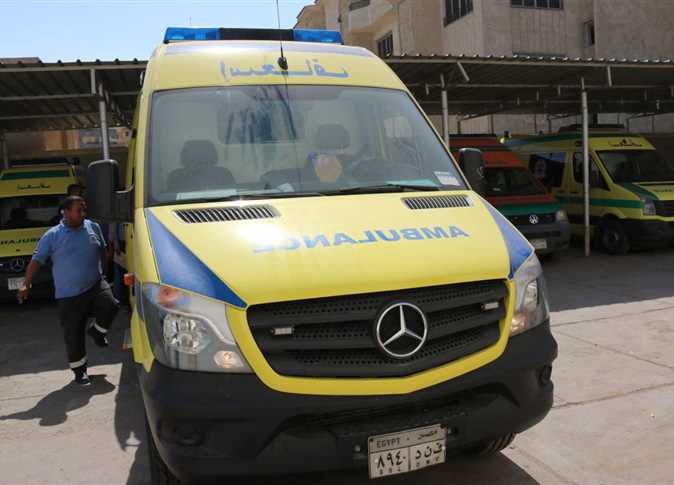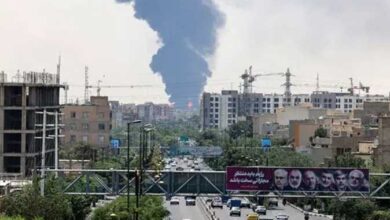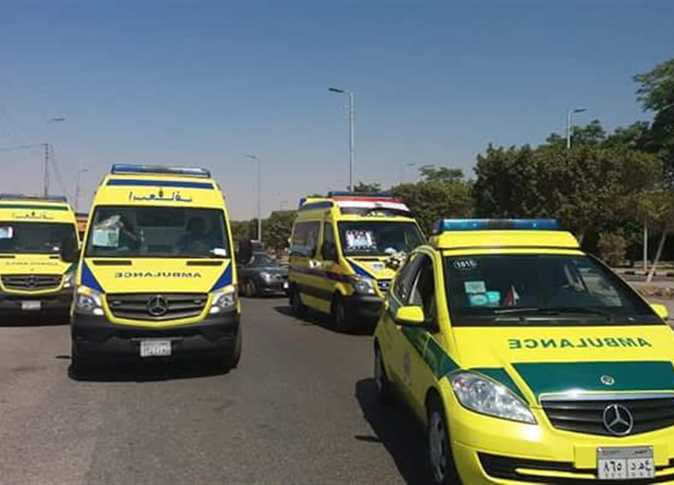As over-congestion and a lack of sophisticated urban planning continue to plague the streets of ever-growing Cairo, few entities are becoming as threatened as the emergency service networks – namely, the police, fire and medical sectors.
Vehicles customarily should move out of the way when emergency sirens are heard from behind. But it is becoming increasingly difficult for drivers to find anywhere to move to, particularly outside main roads, often resulting in potentially manageable fires taking down entire buildings, as well as ongoing health-related deaths.
Additionally, the influx of the majority of Egyptians – approximately 60 percent, according to 2009 census – into informal housing, where streets are not even wide enough to support vehicular transport, let alone a fire truck, has nearly rendered most emergency services useless.
According to urban planner Khaled Abdel Halim, who is the United Nations Development Programme’s (UNDP) technical adviser to the Local Development Ministry, the disintegration of Cairo’s emergency services is one of the symptoms the city will naturally face when integrated planning and research is not taken seriously.
“Just yesterday [Sunday] we had an old man in critical condition [heart attack] pass away after being jammed for over an hour in traffic,” says Ahmed, a medical worker at Qasr al-Aini Hospital who refused to disclose his full identity.
Ali Abdallah, a chief fireman who is stationed in Maadi, says that “many deaths occur because we are unable to reach emergency sites in time. Being obstructed has become a routine part of the job.”
Urban planners contend that the issue is multidimensional in nature. In addition to the external factors of road quality, congestion and driving customs, there are also internal factors relating to the logistics of the emergency sectors and the aptitude of the personnel involved.
“Internally, these public [emergency] institutions, particularly in relation to traffic and transport, suffer from a mix of bureaucracy and general lack of awareness that is quite destructive,” Abdel Halim says.
Aside from chance instances, many emergency workers are reluctant to comment on the issue, stating that they are not allowed to speak on behalf of the Interior Ministry, which is in charge of managing Cairo’s traffic and transport sectors. Others were unable to comment, with one person saying, “It’s everyone and their luck; if God wants you to be reached in time, he will make it happen.”
Externally, according to planners, the problem arises from decades of disrespect from the government and investors toward essential urban growth mechanisms and an unwillingness to value the respective prognostic research.
Spokesman Ali Fawzy from the Central Traffic Department, the affiliate of the Interior Ministry responsible for managing Cairo’s traffic, says that improving the fluidity of emergency services is a high priority issue, but until a sufficient plan is realized, a system is in place in which traffic officers coordinate with one another by radio to create a permeable path. This strategy, however, is only applied during “urgent situations,” and if this is not the case, nothing extra is done.
Fawzy also emphasizes the importance of Cairo’s social cohesion in addressing the problem with emergency situations, in which it is not uncommon to find neighboring civilians climbing buildings to put out fires or carrying patients to the nearest accessible ambulance location.
Maadi fireman Ali Abdallah says, “When there is an extremely urgent fire in a place we can’t reach, we can send as many as up to eight personal vehicles toward the fire at the same time, carrying 500-meter-long hoses, in hope that one of them gets through.”
But urban planners worry these types of solutions are temporary in nature and allow the root of the problem, both internal and external, to develop toward the critical level – if that hasn’t already happened.
“We urgently need to create awareness amongst both civilians, workers and the government on the tight relation that exists between urban planning and communal structural dynamics,” states Dina Shehayeb, professor of housing and urban design at Egypt’s Housing and Building Research Centre (HBRC). “The workers need to be re-empowered in terms of their communal role and to be encouraged to raise issues of occupational obstruction to their superiors, the government needs to address these issues and take expert research seriously, and civilian trust in emergency authority needs to be regained.”
Civilian trust refers to the phenomenon of Egyptian drivers being hesitant to move out of the way due to a widespread belief that emergency drivers abuse their sirens simply to navigate the city, with or without emergency.
To address external factors of unpreventable over-congestion and limited road access, networking emergency services will be key.
“We must develop comprehensive strategies that allow emergency departments to be plotted against each other and their respective communities,” Abdel Halim says. “Congestion needs to be incorporated into this map so that both fire and medical departments can communicate and their services managed correspondingly.”
Shehayab says that areas that can't be reached, within reason, must be networked with the efficient use of fire hydrants, which Cairo lacks.
In addition to immediately effective solutions, long-term solutions suggested by planners also tie in with the city’s plans to further develop its public transport systems.
“We have long been attempting to implement bus lanes throughout the city so that private car dependence is lowered,” says Abdel Halim. “Perhaps the emergency service crisis can serve as an incentive to develop lanes for both public transport and emergency vehicles.”
However, urban planners stress that this should not be done by the static approach of widening the roads, which destroys the urban landscape, but rather through effective planning.
“It is crucial that we get active to plan ahead in order to prevent future crises and emergencies, rather than simply noticing the tragedies as they happen,” Abdel Halim says. “How bad do things have to get until public institutions initiate constructive dialogue with urban planners? If a failure of the emergency service network is not enough incentive to get serious, I don’t know what is.”



